What Are the Three Sources of Family Planning Funding
For more than 50 years, a network of public programs and providers have assisted millions of depression-income women of childbearing age in the U.S. to obtain sexual and reproductive health services. Medicaid, the Championship Ten Family Planning Plan, and Section 330 of the Public Wellness Service Human action (PHSA) provide critical support to more than 10,000 rubber-net clinics across the country that provide reproductive health services to low-income women, men, and teens. Since the 2022 election, state and federal efforts to restrict public funding to Planned Parenthood and other abortion providers and to funnel new federal funds to faith-based providers who oppose contraceptives and abortion take gained traction and begun to shift the family unit planning landscape across the nation.
Ane in 3 low-income women in the U.s.a. relies on a clinic, either a health center, Planned Parenthood or other publicly-funded clinic to get contraception (Figure ane). These providers also offer STI screening and treatment services, and other preventive care and for some women are the sole source of their medical care. Medicaid, Title X, and other federal and government programs are disquisitional sources of funding for these clinic-based providers. Poor women are more probable to experience an unintended pregnancy, have an abortion, contract a sexually transmitted infection (STI) and take less access to care than higher income women. In 2017, approximately 30% (21 one thousand thousand) of reproductive-age women lived in households that earned less than 200% of the federal poverty level ($twoscore,840 for a family unit of three).
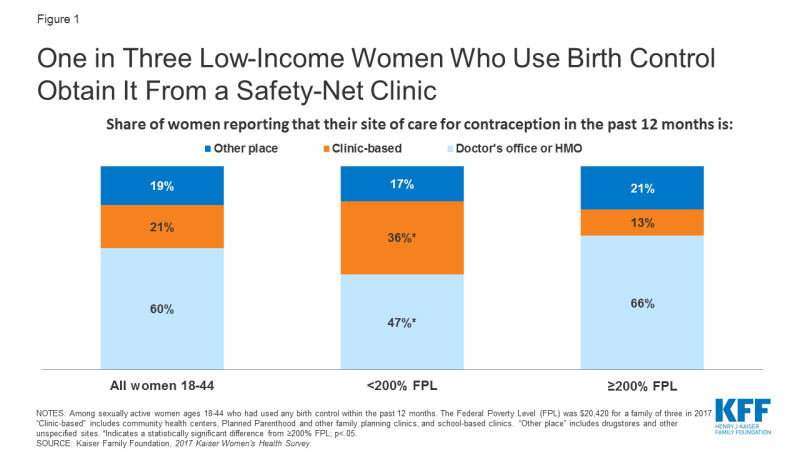
Figure 1: Ane in Three Low-Income Women Who Employ Nativity Control Obtain Information technology From a Condom-Cyberspace Clinic
Major Public Programs for Financing Family Planning Services for Depression-Income People
Medicaid –Health coverage program that covers more lxx million low-income individuals. Operated jointly by federal and state governments, all beneficiaries have coverage for family planning services, and according to federal statute, may encounter the participating provider of their pick. Medicaid is the largest funding source for public family unit planning services.
Title X – The nation's but federal program specifically dedicated to supporting the delivery of family planning care. The plan provides funds to approximately 4,000 clinics beyond the nation to back up the commitment of family planning services to low-income individuals.
Section 330 Grants – Provides cadre support to the nation's Federally Qualified Health Centers (FQHCs), the largest system of clinics providing primary care services to poor and underserved patients. All FQHCs provide some family planning intendance within their network.
Over the by three years, policy changes at the state and federal level in Medicaid and Title Ten have restricted providers from receiving federal and state funds if they provide abortion services in add-on to family planning care. This cursory reviews the role of these public programs and providers in financing intendance and enabling admission to family planning services. It as well addresses the impact of deportment taken by President Trump and Congress to cake federal funds from Planned Parenthood and other entities that provide abortion.
Medicaid is the Primary Source of Public Funding for Family unit Planning
Medicaid, a jointly operated and funded federal/state program, covers more than four in ten (44%) low-income women of reproductive age, the leading source of coverage amongst this population (Figure two). Across the nation, the share of low-income reproductive-age women enrolled in Medicaid varies considerably by state. These differences are the outcome of state choices about Medicaid eligibility, specially whether the state has expanded Medicaid to all adults up to 138% FPL as permitted by the ACA and land-established income eligibility thresholds for parents in the not-expansion states. Coverage rates range from a loftier of 71% of reproductive historic period women in Vermont to a low of 22% in Utah (Appendix Table 1). In 2014, the most contempo year in which national enrollment data is available, xix.ane 1000000 reproductive-age women were enrolled in the plan. For these women, Medicaid provides comprehensive affordable coverage to help run into the full range of their health care needs, and guarantees that they will not take any out of pocket costs for family planning services and pregnancy-related intendance.
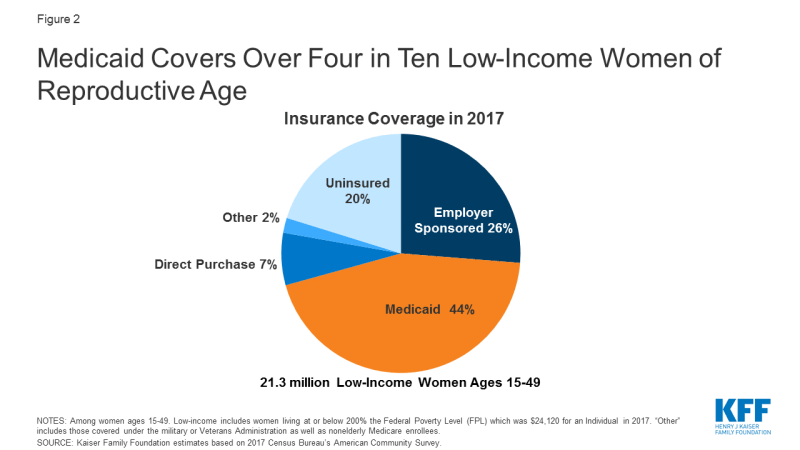
Effigy two: Medicaid Covers Over Four in Ten Depression-Income Women of Reproductive Age
Medicaid accounted for 75% of all public funds spent on contraceptive services and supplies in 2015. Federal police stipulates that family planning is a "mandatory" benefit that states must comprehend nether Medicaid, only provides states, with considerable discretion in specifying the services and supplies that are included in the program. Almost state Medicaid programs make the total range of FDA canonical contraceptives available to women, and nearly all cover counseling on STIs and HIV too as screening for cervical cancer.
Other federal requirements that shape family planning policy under Medicaid include:
- The federal authorities pays xc% of all family unit planning services and supplies, and states pay 10%. This is considerably higher than the federal match that states receive for almost other services, which ranges from l% to 78%, depending on the state.
- Federal constabulary prohibits toll sharing for whatever family planning (and pregnancy-related) services.
- States must allow "any willing provider" to participate in the Medicaid program unless there is "evidence of fraud or criminal activity, material non-compliance with relevant requirements, or cloth problems concerning the fitness of the provider to perform covered services or appropriately bill for them." While this provision is not specific to family planning, the policy ways that states cannot bar providers from the program simply considering they provide abortion services.
- Medicaid beneficiaries have "liberty of pick" to obtain family planning services from any provider participating in the program. For those enrolled in managed care plans, there is an boosted protection, ensuring that beneficiaries may seek family planning services even if the provider is outside of the programme's network.
- The Hyde Amendment prohibits any federal dollars, including Medicaid reimbursements, from being used to pay for abortions except in cases of rape, incest or life endangerment of the woman. Clinics, including some Planned Parenthood sites, which provide both family planning and abortion services, cannot be reimbursed with federal Medicaid dollars for abortions, but they tin be paid for all services including contraceptives, cancer screenings, and STI testing and treatment.
- States may plant limited telescopic programs through Medicaid Section 1115 Research and Demonstration Waivers or through State Plan Amendments (SPAs) to provide family planning services to individuals who do not qualify for full-telescopic Medicaid. Today, more than half of states have established such programs (Effigy 3).
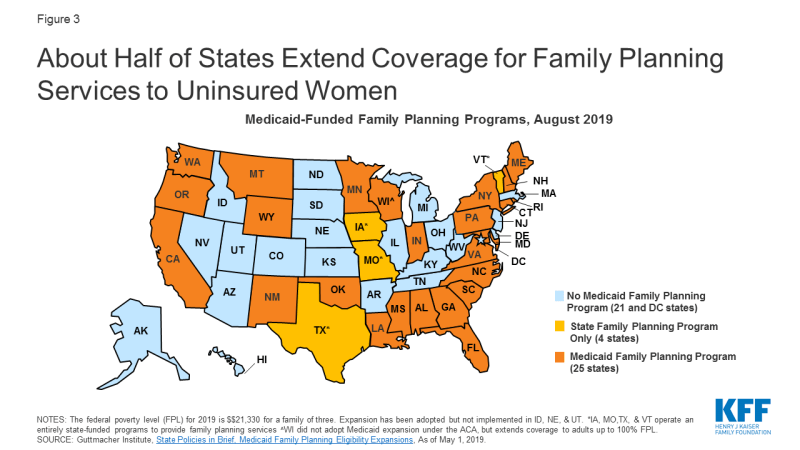
Figure 3: About One-half of States Extend Coverage for Family Planning Services to Uninsured Women
Title X Funds Support Clinics That Provide Family Planning Services to Low-Income People
The Title 10 National Family unit Planning Program, a federal cake grant administered past the HHS Office of Population Affairs (OPA), is the only federal program specifically dedicated to supporting the delivery of family planning care. The programme funds organizations in each state to distribute federal dollars to safety-net clinics to provide family planning services to low-income, uninsured, and underserved clients. In June of 2019, approximately four,000 clinics nationwide received Title X funding, including specialized family planning clinics such every bit Planned Parenthood centers, primary care providers such as federally qualified health centers (FQHCs), and health departments, school-based, faith-based, and other private nonprofits (Appendix Tabular array 2). In 2018, two-thirds (65%) of clients seen at Title X clinics had family incomes at or below the poverty level, 38% were covered by Medicaid or another public program, and four in ten (40%) were uninsured.
Title X grantees must serve low-income populations at low or no price, and have historically been required to provide clients with a wide range of contraceptive methods every bit recommended by the national Quality Family unit Planning Guidelines (QFP), and ensure that the services are voluntary and confidential. In add-on to providing clinics with funds to cover the directly costs of family planning services and supplies such as contraceptives, Championship X funds enable clinics to pay for patient and community educational activity services about family planning and sexual wellness issues, as well as infrastructure expenses such as rent, utilities, information technology, and staff salaries. Title X clinics are as well eligible to obtain discounted prescription contraceptives and devices through the federal 340B plan. No other federal plan makes funds available to support clinic infrastructure needs specifically for family planning. In contrast, Medicaid reimburses for specific clinical services.
Signed into police force by President Nixon in 1970, the Title X programme is currently funded at $285 million. The program upkeep, nonetheless, has not kept pace with medical price inflation over time. Clinics that provide family planning services have a mix of revenue sources, including grant funds from Title X and other programs, reimbursement for patients covered by Medicaid or private insurance, and some out of pocket payments from patients. Title X clinics received nineteen% of their revenue from the Title Ten grant, while Medicaid reimbursement accounted for 39% of revenue in 2018.
Over the past decade, the Title X plan has experienced pregnant financial cutbacks due to federal budget reductions and freezes. In addition, some Congressional leaders have questioned the need to continue to fund the program, the types of services that the programme tin can cover and the providers who qualify for funding. In March 2019, the Trump administration published a new regulation that alters the program significantly. In particular, the new rules block the availability of federal funds to family planning providers, such equally Planned Parenthood, if they also offer abortion services with not-Championship 10 funds. The regulation also prohibits Title X-funded providers from making referrals to abortion services for pregnant women seeking that intendance and requires providers that receive Title Ten support to refer all meaning women to prenatal intendance even if a woman wants to terminate the pregnancy.
Currently, the new regulation is in consequence, but it has been challenged by 23 states, major family planning organizations, and the American Medical Association in federal court, claiming the new rules violate the Constitution and federal law. As of October 2019, 18 of 90 grantees that had received funding in April 2022 are no longer participating in the programme because they are unwilling to comply with the new federal regulations that limit their ability to provide clients with ballgame referrals and block them from participating if they also offering abortion services. In add-on, one quarter of the family unit planning (approximately 1,000 clinics) network no longer receive Title X funding to support family planning services to low-income women in the customs and some states are no longer participating in the Title X program. The loss of Title X funding may force some clinics to close and others to reduce hours, services, and staff grooming.
Many Health Centers Offer Family Planning Services, only the Range and Volume of Services They Provide Varies
Nether Section 330 of the PHSA, the Health Resources and Services Administration (HRSA) provides grants to health centers whose chief focus is providing primary and preventive intendance to underserved and vulnerable populations. These clinics, chosen Federally Qualified Health Centers (FQHCs), are required to provide "voluntary family planning" services along with a broad range of health care services. Although it is non specifically defined in FQHC guidelines, voluntary family planning services can include preconception care, screening and treatment of STIs, and contraception. A survey of FQHCs plant that virtually all reported they provided at least ane method of contraception at one or more of their clinical sites.
Notwithstanding, research has documented differences betwixt dispensary types in their ability to offer straight access to the most constructive contraceptive methods (Figure 4). For example, about eight in x Planned Parenthood clinics (83%) and three-quarters of health department clinics (76%) can provide initial supply and refills of oral contraceptives on site, compared to one-third (34%) of FQHCs. Similarly, there are differences in capacity for family planning care within the FQHC network. In a 2022 Kaiser Family unit Foundation/ George Washington Academy written report of FQHCs, fourscore-90% of centers that received Championship X funds reported they provide LARCs, compared to only about one-half of FQHCs that did not receive Title X back up (Figure 5).
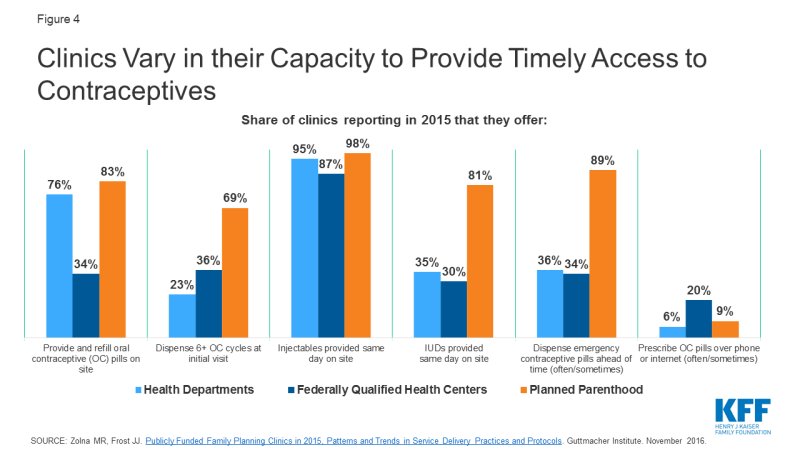
Figure four: Clinics Vary in their Capacity to Provide Timely Access to Contraceptives
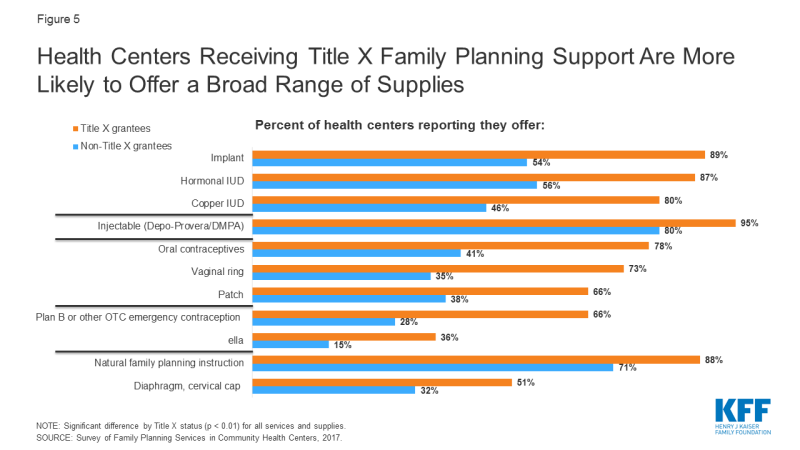
Figure 5: Health Centers Receiving Title X Family Planning Support Are More Likely to Offer a Broad Range of Supplies
FQHCs are paid using the Prospective Payment Organization (PPS), which is a higher rate to ensure their costs are coverage and clinics are fully reimbursed for Medicaid patient services, allowing them to utilise their federal 330 grant to care for uninsured and under-insured patients. FQHCs must take a sliding fee scale for patients with incomes beneath 200% FPL and offer services to all patients regardless of their ability to pay. Of those served in 2017, 69% lived at or beneath the poverty line, 23% were uninsured, and 49% were covered by Medicaid or Fleck.Similar to Championship Ten clinics, FQHC funding comes largely from Medicaid payments, which made up 44% of revenue in 2017, followed by Section 330 grants (xviii%) and state, local, and private grants (38%).
Recent Federal and Country Efforts Take Moved to Disqualify Planned Parenthood Clinics from Receiving Title X Back up and Reimbursements nether Medicaid
In the start three years of the Trump Administration, the President and many Congressional Republicans pursued multiple avenues to restrict public funds from going to Planned Parenthood and other clinics that provide both contraception and abortion services. In 2017, the Assistants reversed an Obama era regulation that would accept prevented states from blocking Title X funds from going to Planned Parenthood and other clinics that provide abortion using other funds. In 2017, every version of Republican legislation to supersede the ACA included provisions that would have banned federal Medicaid payments to Planned Parenthood clinics. While none of these bills were enacted, this would take upended Medicaid's "costless choice of provider" requirement and would have resulted in a meaning revenue loss for Planned Parenthood.
A mutual theme among proposals to block Planned Parenthood and other specialized family unit planning clinics from the Medicaid program is the redirection of funds to other providers, such as community health centers (CHCs), with the expectation that CHCs could come across the needs of those formerly served by Planned Parenthood. Nevertheless, Planned Parenthood served approximately one-third (32%) of women seeking contraceptives at condom-cyberspace clinics in 2015. In dissimilarity, while there are considerably more FQHCs (representing 54% of safety-cyberspace clinics), they served roughly the same share (xxx%) of women seeking contraceptive care equally Planned Parenthood (Effigy 6). CHCs and other remaining clinics would not likely be able to meet additional demands that would be placed on them to provide the total range of family unit planning services.
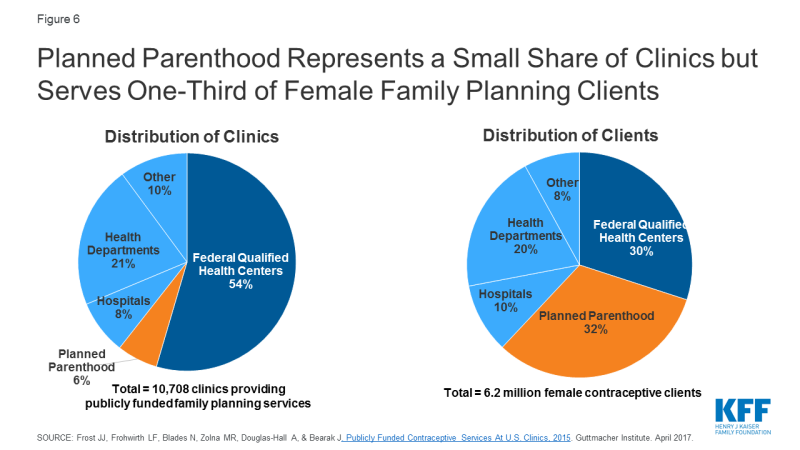
Figure 6: Planned Parenthood Represents a Small-scale Share of Clinics but Serves One-Third of Female Family Planning Clients
The bear on of banning federal Title X funds and Medicaid reimbursement to family planning clinics would vary across the state. In some states in that location are very few Planned Parenthood clinics, while in other states they are the predominant provider for depression-income people seeking contraceptive services. In 13 states, Planned Parenthood clinics were the site of care for over xl% of women who obtained publicly funded contraceptives.
Experience at the state level has shown that blocking Planned Parenthood from receiving Medicaid reimbursements or Title X funding reduces low-income women'southward access to contraceptives. In 2013, Texas replaced its federally funded family planning waiver program with a 100% land funded program that excluded Planned Parenthood as a participating provider. Following the policy change, there was a sharp drib in the number of women served past the country's program, and access problems have persisted. A recent written report found that approximately 1-tertiary of publicly insured women in Texas reported difficulty finding a provider (36%) that accepts their coverage and locating a provider that offers services (33%). Furthermore, there was a sizable driblet in Medicaid claims for IUDs, contraceptive implants, and injectable contraceptives (IUDs and implants are the nearly costly and effective methods) and an increase in Medicaid-funded births. In 2013, the Wisconsin legislature canonical family unit planning cuts directed at Planned Parenthood, which resulted in the closure of five Planned Parenthood clinics in rural areas. Women who used the Planned Parenthood clinics were referred to other clinics that were usually further away with look lists that did not provide the full range of contraceptive methods. A study conducted past Health Management Associates for Planned Parenthood concluded that women in seven Wisconsin counties would have no alternative family planning provider should Planned Parenthood centers close at that place.
Several other states have likewise attempted to limit public funds to clinics that provide contraception and abortion services, including Planned Parenthood. 3 states – Texas, Tennessee, and South Carolina, have applied to CMS for a federal waiver to exclude abortion providers from their Medicaid networks for non-abortion services, while Arkansas and Missouri have already done so, despite the federal free pick of provider requirement. Several other states have blocked land and Title X funds to clinics that provide both family planning and abortion (Table 1). These restrictions were in place prior to the Trump Administration's change to the Championship X program, which affect the entire nation. Should the federal Title X rules get reversed in courtroom, country-level limits would remain in identify.
| Table 1: Selected State Policies and Legislative Proposals Regarding Public Funding for Family unit Planning Providers | |
| State Efforts to Limit or Protect Funding for Family Planning Providers | States |
| Bans sure family planning providers from receiving Medicaid funds | Arkansas, Iowa, Missouri, Texas |
| Applied to federal government for waiver from Medicaid free choice of provider requirement | Due south Carolina, Tennessee, Texas |
| Prevents state family planning and/or Title X funds to providers that offer ballgame services, regardless of federal policy | Mississippi, Nebraska, Wisconsin |
| Prohibits other forms of public funds^ to abortion providers or entities affiliated with ballgame provision or referral | Arizona, Arkansas, Florida, Mississippi, Missouri, Nebraska, Ohio, Northward Carolina, Texas, Wisconsin |
| NOTE ^Public funds from programs such as Sex instruction, Breast and Cervical Cancer Bloodshed Prevention Human action, Violence Against Women Act, HIV/AIDS initiatives, etc. SOURCE: Kaiser Family Foundation analysis of land legislation; Guttmacher Constitute. Land Family Planning Funding Restrictions. June 2019. | |
Looking Forwards
Federal and state funding that supports Medicaid, the Championship X program, and Section 330 of the PHSA is the financial core for safety-net clinics that provide family planning services to the uninsured and other vulnerable populations. This federal funding of family planning services and Planned Parenthood receives considerable public support. Virtually nine in ten (86%) people say information technology is of import for the federal government to provide funding for reproductive health services, including family planning and nativity control for lower-income women, and 69% say they back up continued federal Medicaid funding to Planned Parenthood for non-ballgame services (Figure 7). The Trump Administration's changes to health intendance policy nether Title X besides as state deportment to restrict funding to Planned Parenthood nether Medicaid are still playing out, with the likelihood that they will create gaps in access for low-income individuals that rely on these programs for their family planning care.
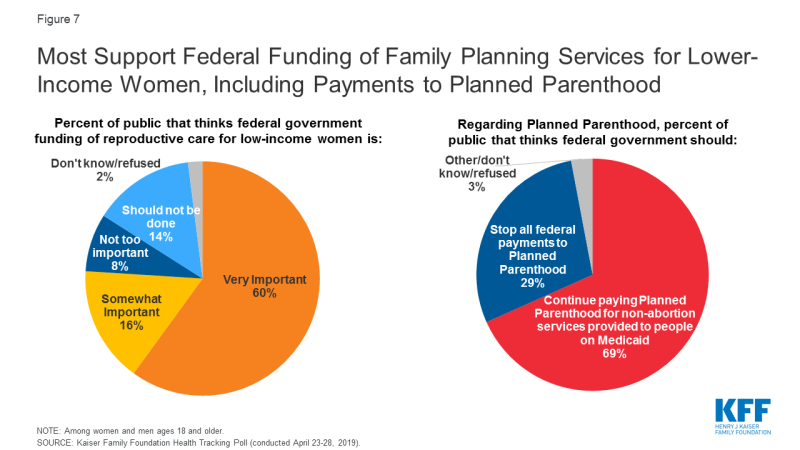
Effigy 7: Nearly Back up Federal Funding of Family Planning Services for Lower-Income Women, Including Payments to Planned Parenthood
Source: https://www.kff.org/womens-health-policy/issue-brief/financing-family-planning-services-for-low-income-women-the-role-of-public-programs/
Belum ada Komentar untuk "What Are the Three Sources of Family Planning Funding"
Posting Komentar